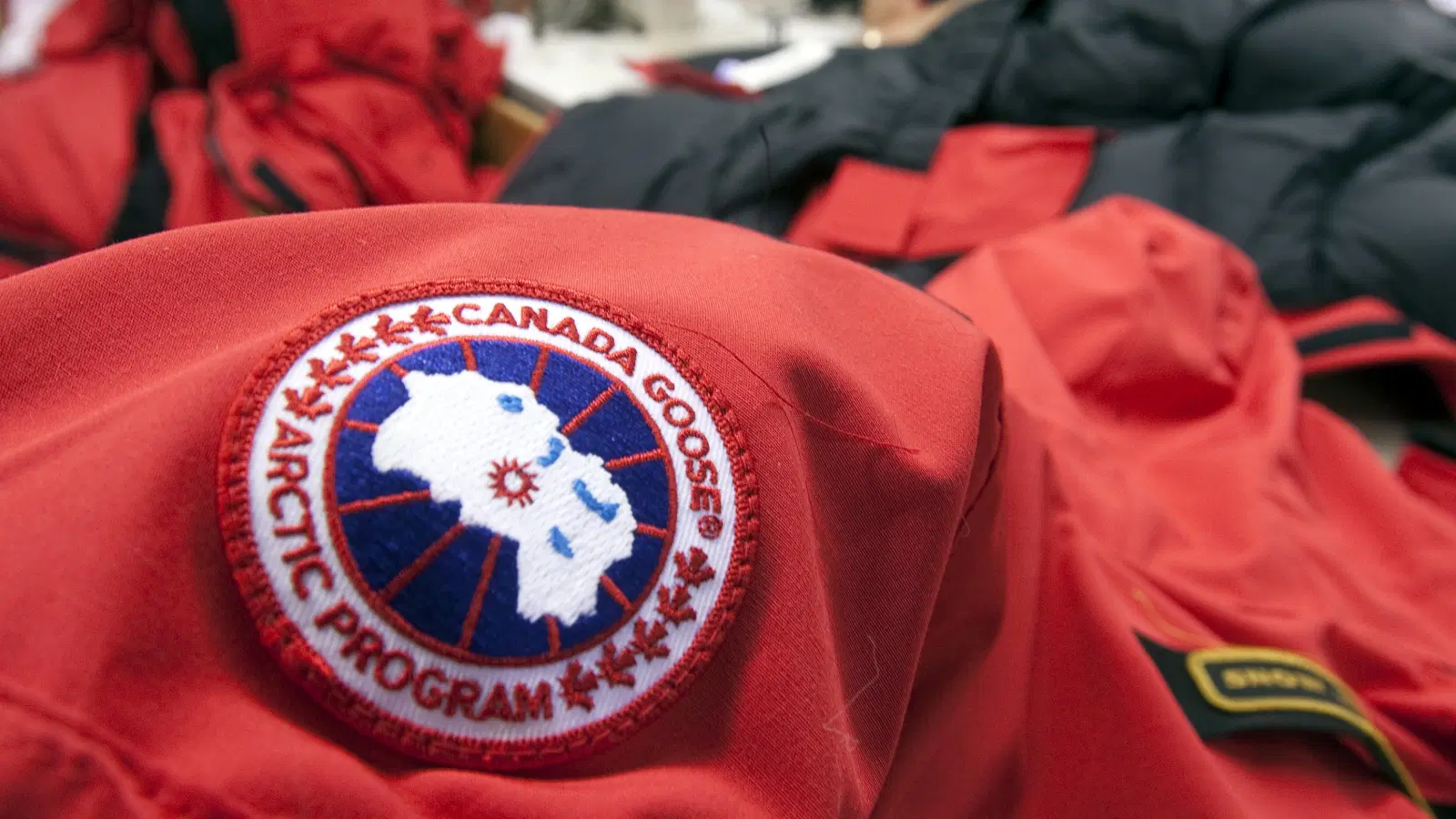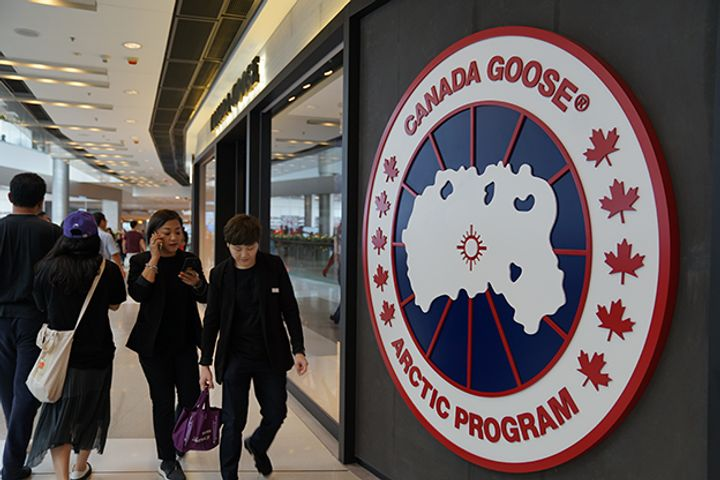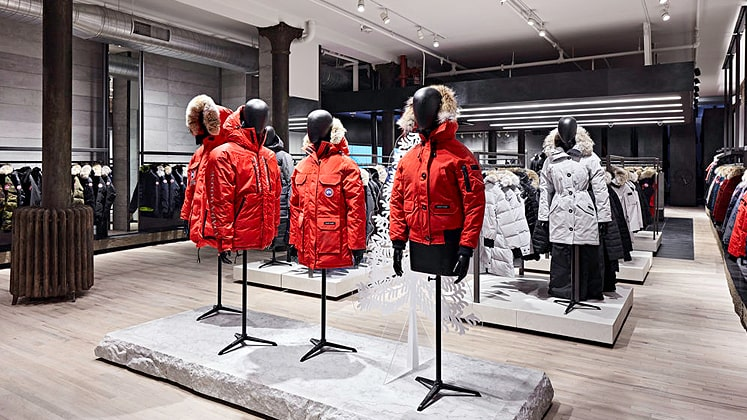The Snow Goose is going global! Know more about this company’s fusion of distribution and marketing strategies! [Monday: Marketing Marvels

What are some of the things you’ll bring in an Arctic expedition?
Energy bars?
Boots?
Parkas?
Well, these are just a few of the basic “must-haves” whenever you go to cold places like the Arctic.
Speaking of parkas…
Do you know that today’s modern parkas are made up of a synthetic, water-repellent material often filled with goose or duck down for warmth?
[Goose or Duck Down: A soft under plumage that geese, ducks, and other waterfowls have to keep themselves warm and dry.]
That’s probably one of the reasons why this company carries the word “goose” in its name.
Canada Goose Holdings Inc. is a Canadian holding company of winter clothing manufacturers. It markets a wide range of jackets, parkas, vests, hats, gloves, and other apparels.
The brand is known for its distinctive red, white, and blue logo that looks like a reverse image of the North Pole. The outer ring of the logo contains the words “CANADA GOOSE” and “ARCTIC PROGRAM,” with five maple leaves on each side.

The logo is usually placed on the upper arm of Canada Goose’s coats or jackets.
According to Dani Reiss, CEO of Canada Goose,
“The badge makes people feel like they belong to a club.”
He also described the brand as the “Swiss watch of apparel” and the “Land Rover of outerwear.”
How do these titles prove true in terms of marketing and expanding Canada Goose’s reach?
In 2018, the company entered the Chinese market by establishing a regional head office in Shanghai!

“As the world’s largest luxury market, the opportunity for Canada Goose in China is massive. We’ve already seen exceptional demand from Chinese consumers―locally and internationally―for years. We are excited to bring our authentic and immersive retail and e-commerce experience directly to our fans there.” ― Dani Reiss, Canada Goose CEO
The company appointed Scott Cameron as Canada Goose’s President for the Greater China area to make sure that all development, marketing, and commercial operations efforts will help grow the brand’s customer base in the Asian country.
“Bringing the Canadian Arctic to Asia”
As a wholesale distributor for several years, Canada Goose saw positive demand for its “authentic heritage, premium craftsmanship, and timeless, function-first designs.”
One of the things the company did to further build on that demand and enable consumers to experience the brand’s offerings?
It opened flagship stores in Beijing and Hong Kong in 2018―the same year when Canada Goose established its regional head office in Shanghai!
With curated store assortments that catered to the preferences of the Chinese market, the stores served as meeting places for consumers to discover the company’s latest product lines and offerings.

Not just that!
The stores also offered apparel products by retail―something that the company was not used to doing before because it positioned itself as a wholesale distributor in the past years.
To succeed in its retail strategy, Canada Goose partnered with ImagineX, a retail brand management and distribution company, to support the operational build-out of the company’s retail presence.
ImagineX was responsible for managing the day-to-day operations of Canada Goose’s Beijing and Hong Kong stores.
From wholesale to retail real quick!
That was all because of Canada Goose’s dedication to serve its target market through whatever means possible.
… and just when you thought that’s all that there was to the company’s retail marketing strategy…
It’s not!
Canada Goose also established its presence and promoted its products via Alibaba Group’s Tmall Luxury Pavilion platform.

With over 700 million active users of the Chinese app, Canada Goose was sure to make its brand known in the Asian country’s e-commerce market!
The company’s expansion into retail with two flagship stores wasn’t simply a move about creating new channels to make more sales.
Canada Goose believed the new stores were not meant to detract from the core of the business but to show “the full array of products since many retailers don’t carry the full array.”
As CEO Reiss explained,
“We’re a global brand. When we have these gathering places for Canada Goose fans, it builds and adds to the global halo of the brand. Wholesale is a very important part of our business and it will continue to be important. But we are able to create the perfect experience and the perfect reflection of the Canada Goose brand.”
The company looks forward to opening more flagship stores in some of the most vibrant cities in the world as well as in places where there are large concentrations of Canada Goose fans.
The brand also markets its products by supplying parkas for participants in the United States Antarctic Program (USAP) and sponsoring several film festivals such as the Sundance Film Festival in Utah and the Toronto International Film Festival.
In the past five years, Canada Goose Holdings Inc. has recorded revenues of:
- USD 222.0 million in 2016
- USD 307.6 million in 2017
- USD 460.6 million in 2018
- USD 638.0 million in 2019
- USD 719.8 million in 2020
Clearly, Canada Goose is doing a lot of things right in its marketing and business strategy―particularly in deciding to “go retail” and directly reaching more of its consumers―as it continues to record higher revenues each year.
Canada Goose Holdings Inc.’s Earning Power: Valens Research vs. As-reported numbers
Canada Goose Holdings Inc. (GOOS:CAN) makes for a great case study that we come back to regularly. One great reason?
The company has proven itself to be a better earning power generator than investors might think.
So, how well has Canada Goose been growing its business in the past years?
The research doesn’t lie—nor do the results. Earning power (the blue bars) continues to show results higher on average than what traditional databases show.

The blue bars in the chart above represent Canada Goose’s earning power (Uniform Return On Assets). Canada Goose has seen generally robust profitability. Its Uniform ROA ranged from 22% to 52% in the past six years, or an average of 37%. Uniform ROA is at 22% in 2020.
The global ROA is just 6%.
The orange bars are the company’s as-reported financial information. If you relied on these numbers, you will see a company with understated profitability. As-reported ROA (return on assets, a measure of earning power) only ranged from 7% to 19% in the past six years. Its as-reported ROA in 2020 was only at 13%, which is almost 2 times lower than its Uniform ROA in 2020.
That’s what you’ll see in Yahoo Finance, Google Finance, and most other databases.
The company’s stock price also performed better than the rest of the stock market over the decade, which we can see in the blue line in the chart below. Its returns have been well above the market.

The numbers show that Canada Goose has been doing well and making a profit.
“Going retail” for the company doesn’t mean it’s completely changing its business model.
The new stores that Canada Goose opened in different parts of the world are just part of a growing marketing initiative as the company seeks to reach new customers and expand to a global market.
For Canada Goose, the future of business is not just wholesale, digital, or retail. It’s a combination of the three.
… and while there’s a lot of talk about e-commerce and omni-channel marketing, business owners, marketers, and consumers alike are starting to realize that bricks and mortar stores are an essential element in the industry.
In CEO Reiss’ own words,
“The future is not just online or just bricks and mortar. It’s a fusion.”
About The Dynamic Marketing Communiqué’s
“Monday Marketing Marvels”
Too often, industry experts and the marketing press sing the praises of some company’s marketing strategy.
…Only for the audience to later find out that their product was a flop, or worse, that the company went bankrupt.
The true ROI in marketing can’t be separated from the business as a whole.
What good is a marketing case study if one can’t prove that the company’s efforts actually paid off?
At the end of the day, either the entire business is successful or it isn’t. And the role of marketing is always paramount to that success.
Every Monday, we publish a case study that highlights the world’s greatest marketing strategies.
However, the difference between our case studies and the numerous ones out there, is that we will always make certain that the firm really did generate and demonstrate earning power worthy of study in the first place (compliments of Valens Research’s finance group).
By looking at the true earnings of a company, we can now rely on those successful businesses to get tips and insights on what they did right.
We’ll also study the greatest marketing fails and analyze what they did wrong, or what they needed to improve on. We all make our mistakes, but better we learn from others’ mistakes—and earlier, rather than later.
Hope you found this week’s marketing marvel interesting and helpful.
Stay tuned for next week’s Monday Marketing Marvels!
Cheers,
Kyle Yu
Head of Marketing
Valens Dynamic Marketing Capabilities
Powered by Valens Research
www.valens-research.com




